Some prefer a narrative approach, others prefer to keep it short and sweet.
Exactly what type of product description is right for you?
Depends on what you’re selling, where, and for whom.
The importance of product description cannot be overstated.
You have a great product, but if you don’t convey how using the right method, your product won’t sell.
So what makes a great product description?
A good product description goes beyond listing features and focuses more on customers.
It tells a story that relates to what the customers worry about and what they will gain if they buy your product. Instead of only listing details, it tries to show how your product can solve a problem or make their life better. In simple terms, a good product description makes customers feel like your product is exactly what they need and adds value to their lives.
Can it be achieved by staying concise? Yes, why not!
We will share examples of what makes a great product description as we explain how to write one for your ecommerce store.
Compelling Product Title
For your customers to buy, they’ll first need to land on your product page.
Product title is what the buyers see when they search for a product on Etsy, Amazon, search ads or your ecommerce website. And you only have a few characters to convey enough about the product that would convince them to click. Make it count by keeping it short, simple, and simple.
Key elements of a product title are:
- Brand name
- Category and Subcategory (e.g. quilt, comforter)
- Material – if applicable (e.g. cotton)
- Color
- Target audience name – if applicable (e.g. for women)
- Target keyword – at least one so that it appears during searches
- USP
If you ask me, if there’s a limited space, I wouldn’t write what’s already visible in the image to save space to highlight other key features.
Let’s take a look at some product ads on Google to get an idea about how to write super-short and compelling titles:
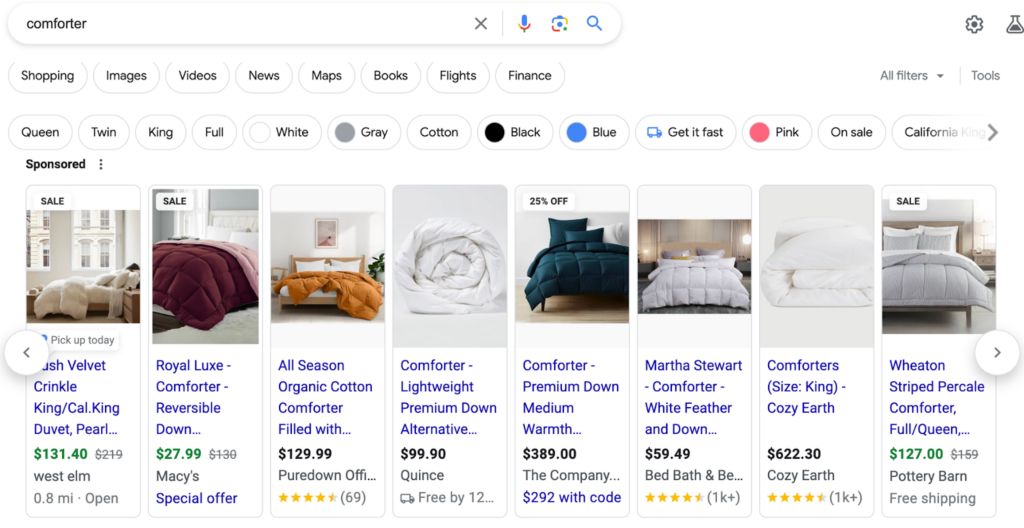
If you’re listing on Amazon, you’ll get more space than that so you can utilize it effectively. Here’s a good example of that:
Leaving the two sponsored listings aside, if we look at the organic results, the one in the extreme right has a better title compared to the one before that. Because it says about the color, size, material, feel and other information that’s missing from the other one.
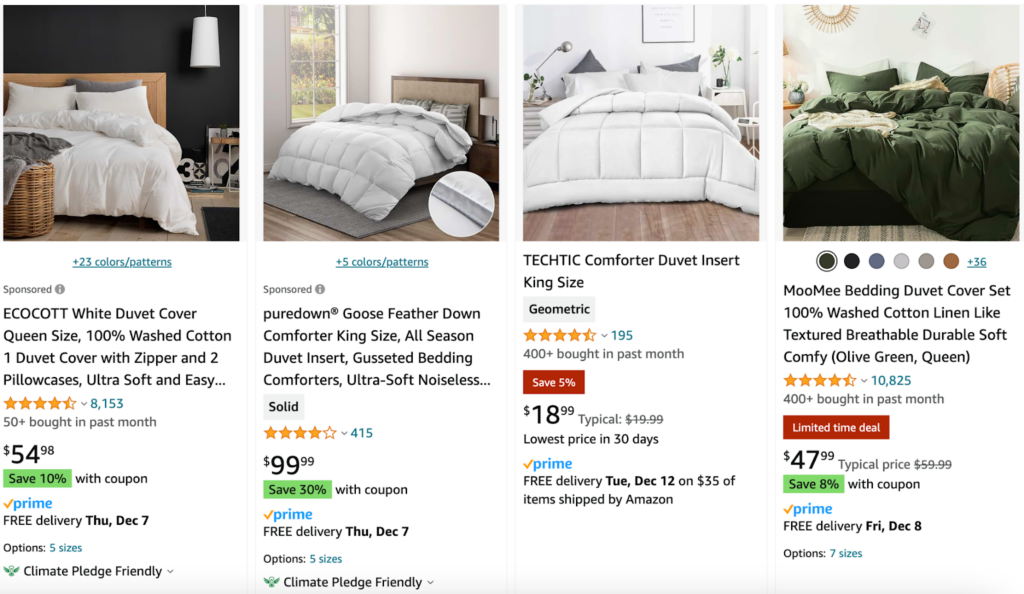
Product Description
Depending on where you are selling, the design of the page, sections and subsections, there can be different ways to present your product.
Product Highlights
The most common design is to highlight key product features at the top so that customers know what to expect from the product.
For example, on Amazon, you’ll see the “About this item” section which serves this purpose. Sellers use bullet points to convey key product offerings, benefits, and other details.
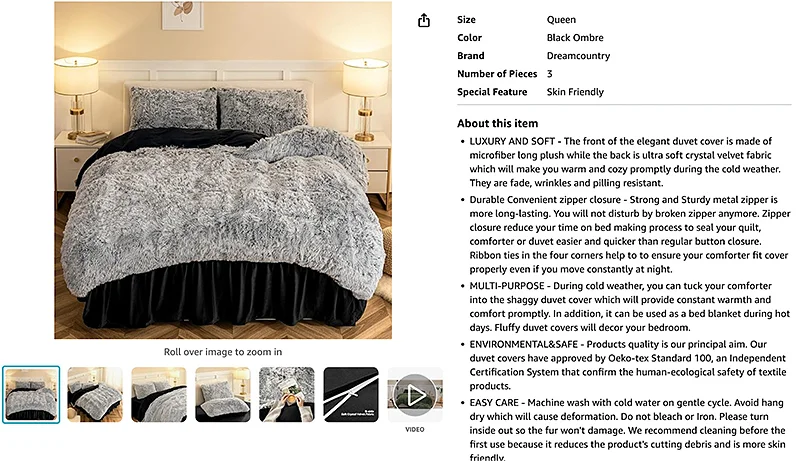
Detailed Description
Amazon has a dedicated space for online store owners to write about the brand and detailed product description to write more information about the brand and product.
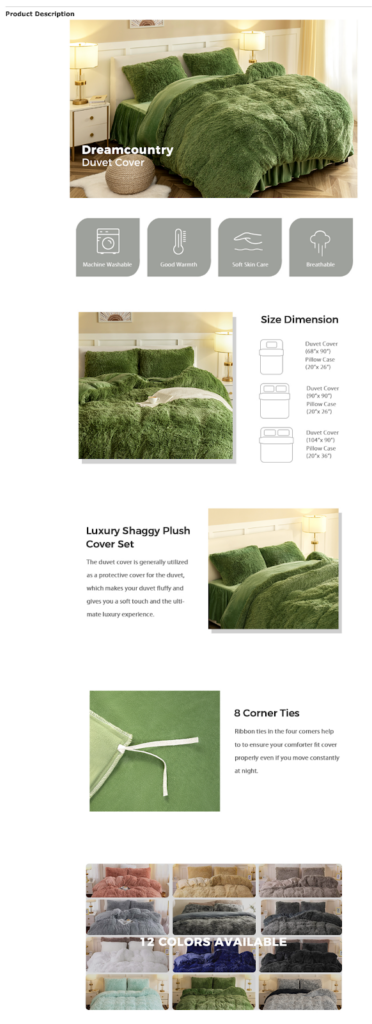
Even if your ecommerce product page has a different design, you can use this approach to create an outline for your ecommerce product page and plan the content accordingly.
That way, you won’t be giving too much information in the beginning which might overwhelm the first-time visitors, but also give them a way to learn more about the product and brand on the same page.
Product Specifications (Technical)
Technical product specifications are detailed descriptions of the specific features, attributes, and functionalities that define a product’s design, performance, and capabilities. These specifications provide a comprehensive breakdown of the technical aspects, including dimensions, materials, power requirements, compatibility, and any other intricate details essential for understanding the product’s construction and operation.
Technical product specifications go beyond the surface-level details visible to the end consumer. Whether it’s the voltage requirements of an electronic device, the materials used in a piece of furniture, or the dimensions of a machinery component, these specifications provide the foundation for quality assurance, regulatory compliance, and overall product excellence.
As a best practice, try to give out as much information as possible to help the buyers know if it’s the right product for them.
Technical specifications can be different depending on the product, for example, if you’re selling a shampoo, the specifications might include raw materials, date of manufacturing, hair type.
Let’s take a look at how Sephora’s product page description has been utilized by one of the brands:
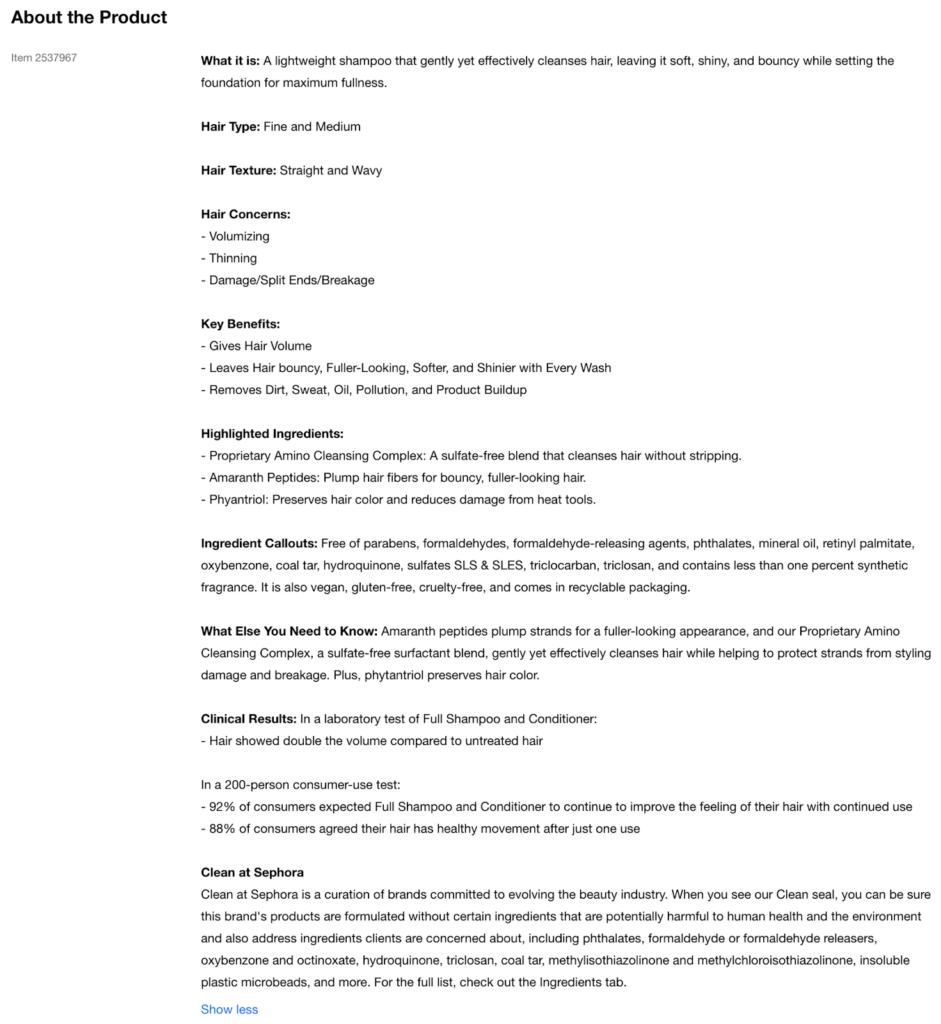
Whereas, if it’s a mattress, you may want to mention a different set of information such as size, style, material, color, weight, dimensions.
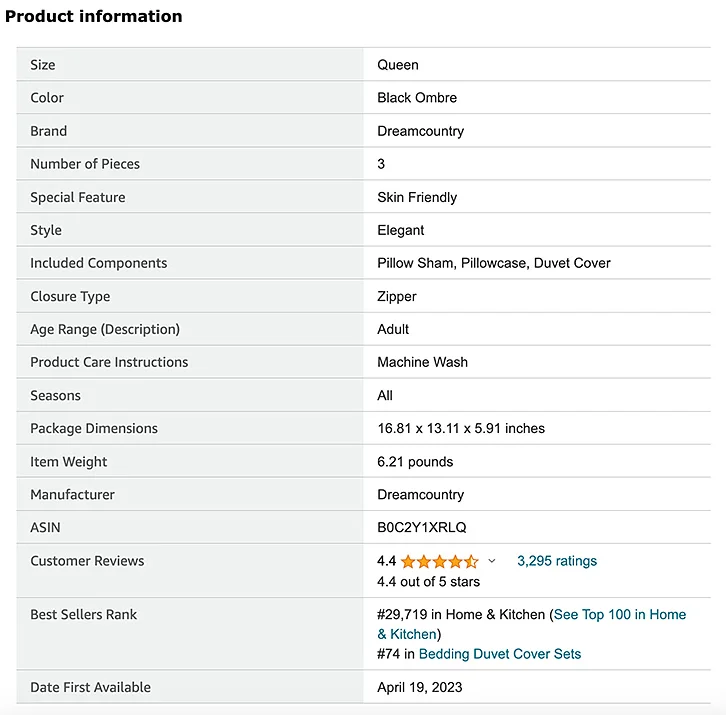
Couple it with Great Visuals
Let’s admit, pleasing the eyes comes before understanding the specifics. Visual appeal is the initial spark that ignites interest, making potential buyers stop, look, and explore further.
When I searched for duvet on Amazon, what struck me was the high-quality close-up images that would almost give me the feel of the fabric. Nearly every product on the first few pages have remarkable visuals that showed folds, knitted fabric
And you know what’s even better? Videos.
See, I posted a video above to show the images of a product.
Now what is better?
Posting 20+ images zoomed in corners of each picture?
Or a video that summarizes it all, and does it quickly?
Videos have the ability to show the product to customers easier than you thought, and it’s convenient for the customers.
No wonder, incorporating video can increase sales by 81%.
Now is the time to take your product descriptions to the next level with video marketing.
Here’s how to use videos to compliment product description and amp up sales:
Live Shopping:
Live shopping isn’t just a trend; it’s an immersive experience. Explore the benefits of connecting live with customers, answering their questions, and making the shopping journey more interactive, real-time.
Live shopping events generate urgency, prompting viewers to make instant decisions, turning viewers into buyers on the spot.
Video Testimonials:
Build Trust Through Stories by having genuine customers sharing their experiences with your product through video testimonials. Explore the authenticity and credibility these testimonials bring, allowing potential customers to see real stories and build trust.
See how this user has shared their review in a beautiful video on Instagram:
Showcase the Product in Action:
Encourage customers to display the product in action through video. It’s not just talking about it; it’s showing how it fits into their lives. This visual storytelling helps potential buyers envision themselves using the product, reinforcing its value.
Shoppable Videos:
Imagine videos where you don’t just watch, you shop! Shoppable videos turn watching into shopping effortlessly. Dive into this interactive world, where buying becomes a breeze. It’s all about easily finding a product in a video and making it yours with a simple purchase.
Enhance Product Visibility:
Dive into the impact of shoppable videos, boosting your product’s visibility and increasing conversions. When customers can instantly buy what they see in a video, it turns passive viewing into an active shopping experience.
Tips for Driving Sales with Product Descriptions
Trim Unnecessary Details:
Abundance of information can overwhelm customers, plus it has a potentially negative impact on their reading experience. So it’s best to omit superfluous details and focus on the core information that customers need.
Create Scannable Content:
Online buyers often skim through content rather than reading it in-depth. So to make it easy for them to learn about your product, offer them a quick overview. Use bullet points and headings to enhance the overall readability of concise product descriptions.
Leverage Customer Reviews and Testimonials Because Real Stories Matter:
Boost your product descriptions with social proof – real customer experiences that build trust and credibility. Use customer reviews for insights and showcase positive feedback.
User-generated content adds authenticity, offering a genuine glimpse into how customers use your products and building a community. Authentic social proof goes beyond traditional ads, providing real evidence of your product’s value. Incorporating them not only enhances transparency but also builds a community of satisfied customers, fostering trust and encouraging confident buying decisions.
Sephora has done it beautifully on their website.
Not only do they have a review and ratings section where users post their honest feedback about the product but they also gamified the review collection by giving the customers an opportunity to be
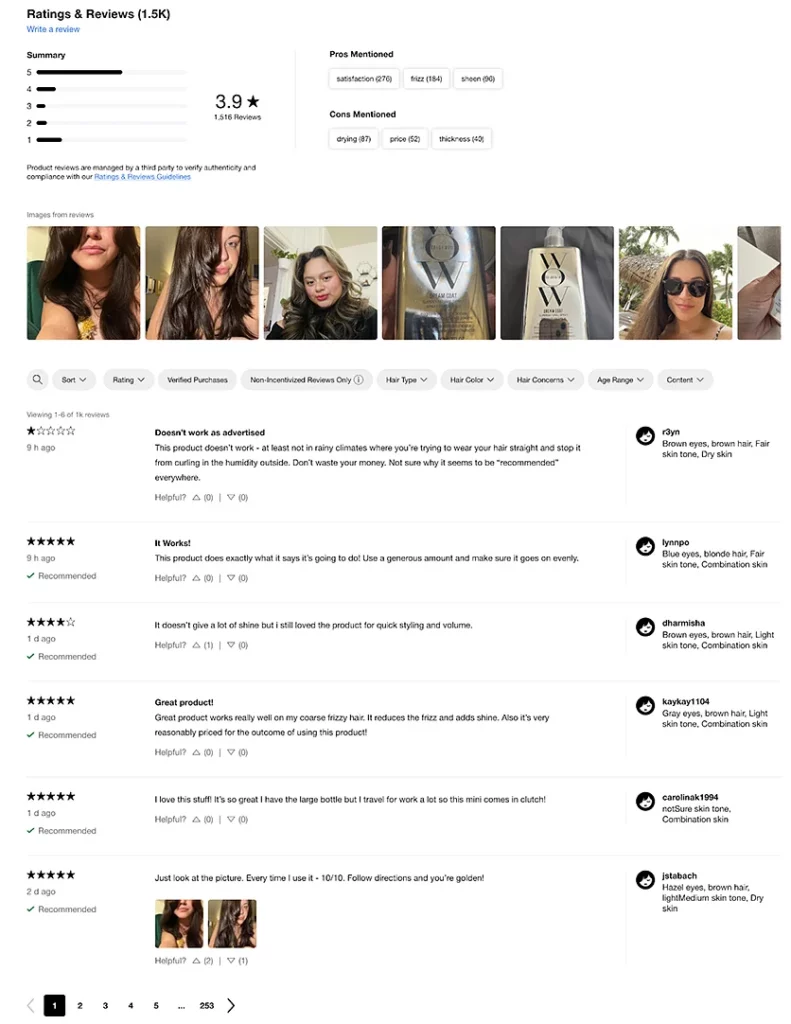
featured.
They have a section called “See It in real Life” that encourages users to share their reviews and tag Sephora so they get a chance to be featured on their page.

Now, that’s a cool strategy!
Utilize SEO Best Practices
Optimizing your e-commerce product descriptions for search engines involves strategic keyword placement, crafting SEO-friendly titles and descriptive content, and maintaining a balance between SEO and readability.
By incorporating relevant keywords, creating engaging titles and descriptions, and ensuring readability, you enhance your product’s visibility to search engines while providing valuable information to potential customers.
The key is finding the right balance between SEO practices and creating content that resonates with your audience.
Craft Compelling Calls-to-Action:
Clear and Direct Messages: Your calls-to-action (CTAs) should be crystal clear. Craft compelling phrases that guide customers on what to do next.
Where you put your CTAs matters. Position them strategically, ensuring they’re visible and appropriately timed in your product descriptions or website. A well-placed CTA is like a signpost directing customers on their journey.
Guide Customers to Make Informed Decisions:
Equip your customers with all the information they need. In addition to product descriptions and specifications, add FAQs to help customers make informed decisions. Because when customers feel well-informed, they’re more likely to take that next step toward a purchase.
Consider incorporating features that allow customers to compare products. This helps them weigh their options, fostering confidence in their decision-making process.
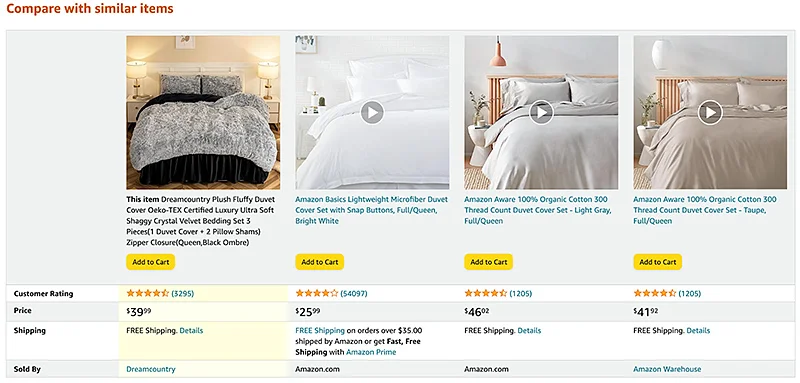
Create a Sense of Urgency:
Whether it’s a discount, exclusive deal, or a special promotion, use limited-time offer tags or ticking clocks to create a sense of urgency.
Highlight when a product is low in stock or available for a limited time. This not only creates urgency but also taps into the fear of missing out (FOMO), encouraging customers to make a purchase before it’s too late.
What are your thoughts about making product descriptions engaging? Let us know!
